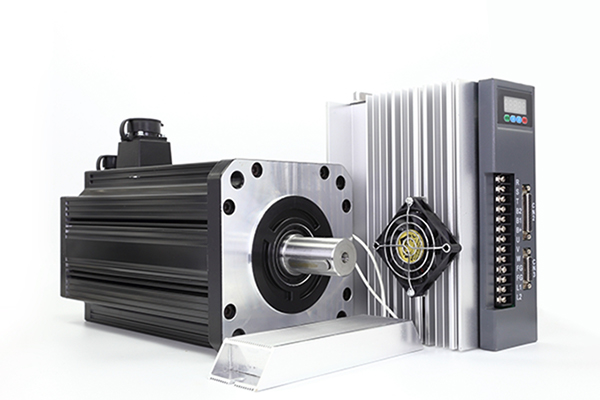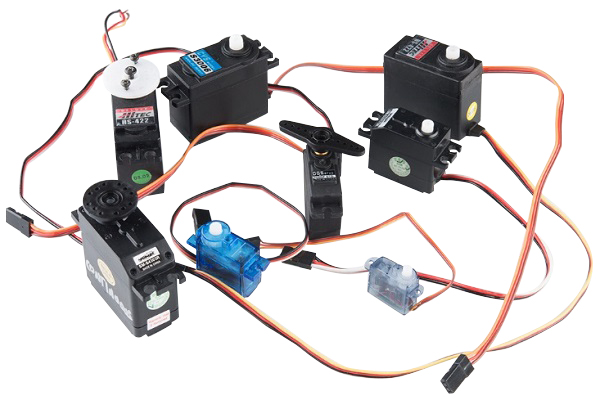Why the Current Value is Negative in Servo Motor?
A servo motor is a type of motor that is capable of controlling the angle of rotation and speed based on an external input signal. The current value plays a very important role in the control process of a servo motor. Under normal circumstances, the current value of a servo motor should be positive, but under some special circumstances, the current value may be negative.
Let's look at what a servo motor's current value is. The current value of a servo motor is the amount of current transferred into the motor through the servo motor driver. The size of the current value can reflect the load and working condition of the motor. Generally speaking, when the load is large or the motor is in a high-speed rotation state, the current value will increase accordingly. When the load is small or the motor is in a low-speed rotation state, the current value will be reduced accordingly.
However, in some special cases, the current value of the servo motor may be negative. This generally occurs when the motor reverses or decelerates to a stop. When the servo motor reverses, the direction of the current changes, resulting in a negative current value. When the servo motor decelerates and stops, the direction of rotation of the servo motor will change due to inertia, which will also lead to a negative current value.

The occurrence of a negative servo motor current value may have a certain impact on the normal operation of the motor. First, a negative current value may cause the control system of the motor to misjudge, which in turn affects the accurate control of the motor. Secondly, a negative current value may cause damage to the driver of the motor and the motor itself. Therefore, in practical applications, we need to try to avoid negative current values in servo motors to ensure the normal operation and service life of the motor.
So, how to avoid the servo motor current value is negative? First of all, we can avoid negative current value by adjusting the control parameters of the motor. Reasonable setting of motor acceleration and deceleration parameters, can reduce the motor in reverse and deceleration stop inertia impact, so as to avoid the current value is negative. Secondly, we can avoid negative current values when the motor reverses by installing a brake or anti-reverse mounting device. A brake can provide braking force when the motor stops rotating, preventing the motor from rotating in the opposite direction. The anti-reverse mounting device can prevent the motor from reversing by designing the mechanical structure.
In addition to the above methods, we can also optimize the control algorithm of the servo motor to avoid a negative current value. For example, a closed-loop control algorithm can be used to accurately control the rotation angle and speed of the motor to avoid the situation of negative current values. At the same time, limit switches and other protective devices can be added to detect the operating status of the motor in a timely manner to prevent accidents caused by negative current values.
Let's look at what a servo motor's current value is. The current value of a servo motor is the amount of current transferred into the motor through the servo motor driver. The size of the current value can reflect the load and working condition of the motor. Generally speaking, when the load is large or the motor is in a high-speed rotation state, the current value will increase accordingly. When the load is small or the motor is in a low-speed rotation state, the current value will be reduced accordingly.
However, in some special cases, the current value of the servo motor may be negative. This generally occurs when the motor reverses or decelerates to a stop. When the servo motor reverses, the direction of the current changes, resulting in a negative current value. When the servo motor decelerates and stops, the direction of rotation of the servo motor will change due to inertia, which will also lead to a negative current value.

The occurrence of a negative servo motor current value may have a certain impact on the normal operation of the motor. First, a negative current value may cause the control system of the motor to misjudge, which in turn affects the accurate control of the motor. Secondly, a negative current value may cause damage to the driver of the motor and the motor itself. Therefore, in practical applications, we need to try to avoid negative current values in servo motors to ensure the normal operation and service life of the motor.
So, how to avoid the servo motor current value is negative? First of all, we can avoid negative current value by adjusting the control parameters of the motor. Reasonable setting of motor acceleration and deceleration parameters, can reduce the motor in reverse and deceleration stop inertia impact, so as to avoid the current value is negative. Secondly, we can avoid negative current values when the motor reverses by installing a brake or anti-reverse mounting device. A brake can provide braking force when the motor stops rotating, preventing the motor from rotating in the opposite direction. The anti-reverse mounting device can prevent the motor from reversing by designing the mechanical structure.
In addition to the above methods, we can also optimize the control algorithm of the servo motor to avoid a negative current value. For example, a closed-loop control algorithm can be used to accurately control the rotation angle and speed of the motor to avoid the situation of negative current values. At the same time, limit switches and other protective devices can be added to detect the operating status of the motor in a timely manner to prevent accidents caused by negative current values.
Post a Comment:
You may also like:

Category
Featured Articles
What is a Servo Motor?
 There are some special types of application of electrical motor where rotation of the motor is required for just a certain angle ...
There are some special types of application of electrical motor where rotation of the motor is required for just a certain angle ...
 There are some special types of application of electrical motor where rotation of the motor is required for just a certain angle ...
There are some special types of application of electrical motor where rotation of the motor is required for just a certain angle ...How to Select the Suitable Power ...
 It's important to consider the unique demands of a motion control application when selecting a power supply. During ...
It's important to consider the unique demands of a motion control application when selecting a power supply. During ...
 It's important to consider the unique demands of a motion control application when selecting a power supply. During ...
It's important to consider the unique demands of a motion control application when selecting a power supply. During ...What are the Types of Servo Motor?
 There are some special types of application of electrical motor where rotation of the motor is required for just a certain angle ...
There are some special types of application of electrical motor where rotation of the motor is required for just a certain angle ...
 There are some special types of application of electrical motor where rotation of the motor is required for just a certain angle ...
There are some special types of application of electrical motor where rotation of the motor is required for just a certain angle ...How to Maintain Servo Motor?
 Servo motors play a crucial role in various industries, serving as precision control devices in applications ranging from ...
Servo motors play a crucial role in various industries, serving as precision control devices in applications ranging from ...
 Servo motors play a crucial role in various industries, serving as precision control devices in applications ranging from ...
Servo motors play a crucial role in various industries, serving as precision control devices in applications ranging from ...How to Test Servo Motor?
 Servo motors are devices that convert electrical signals into mechanical motion and are widely used in industrial automation, ...
Servo motors are devices that convert electrical signals into mechanical motion and are widely used in industrial automation, ...
 Servo motors are devices that convert electrical signals into mechanical motion and are widely used in industrial automation, ...
Servo motors are devices that convert electrical signals into mechanical motion and are widely used in industrial automation, ...